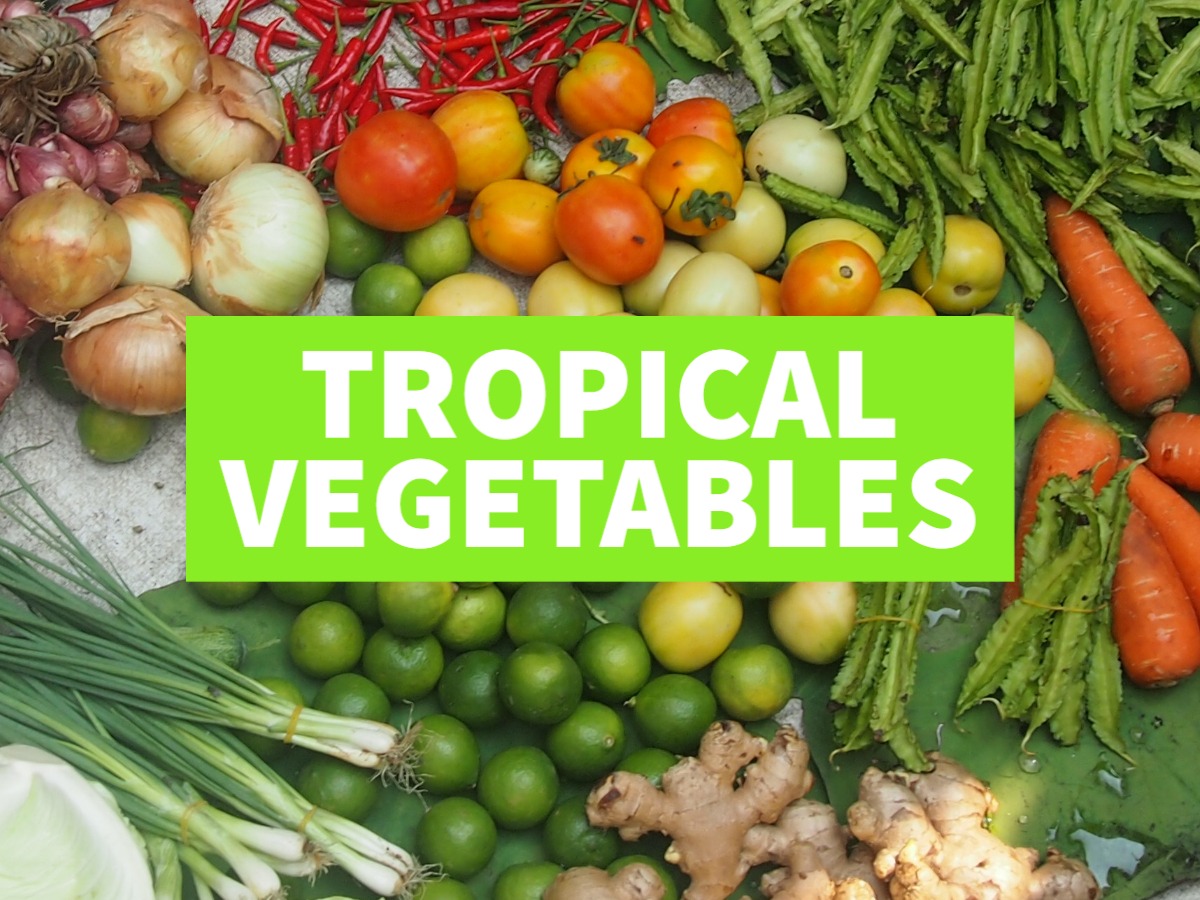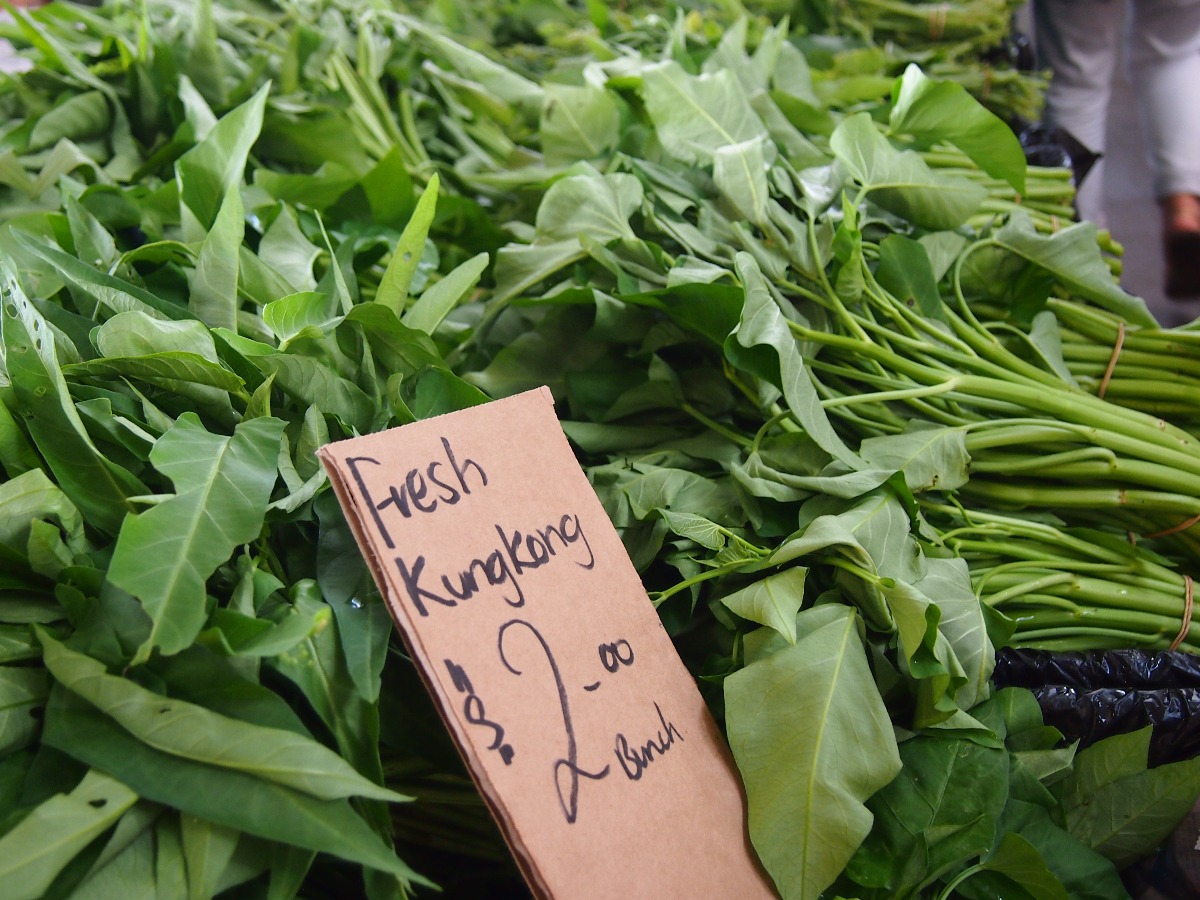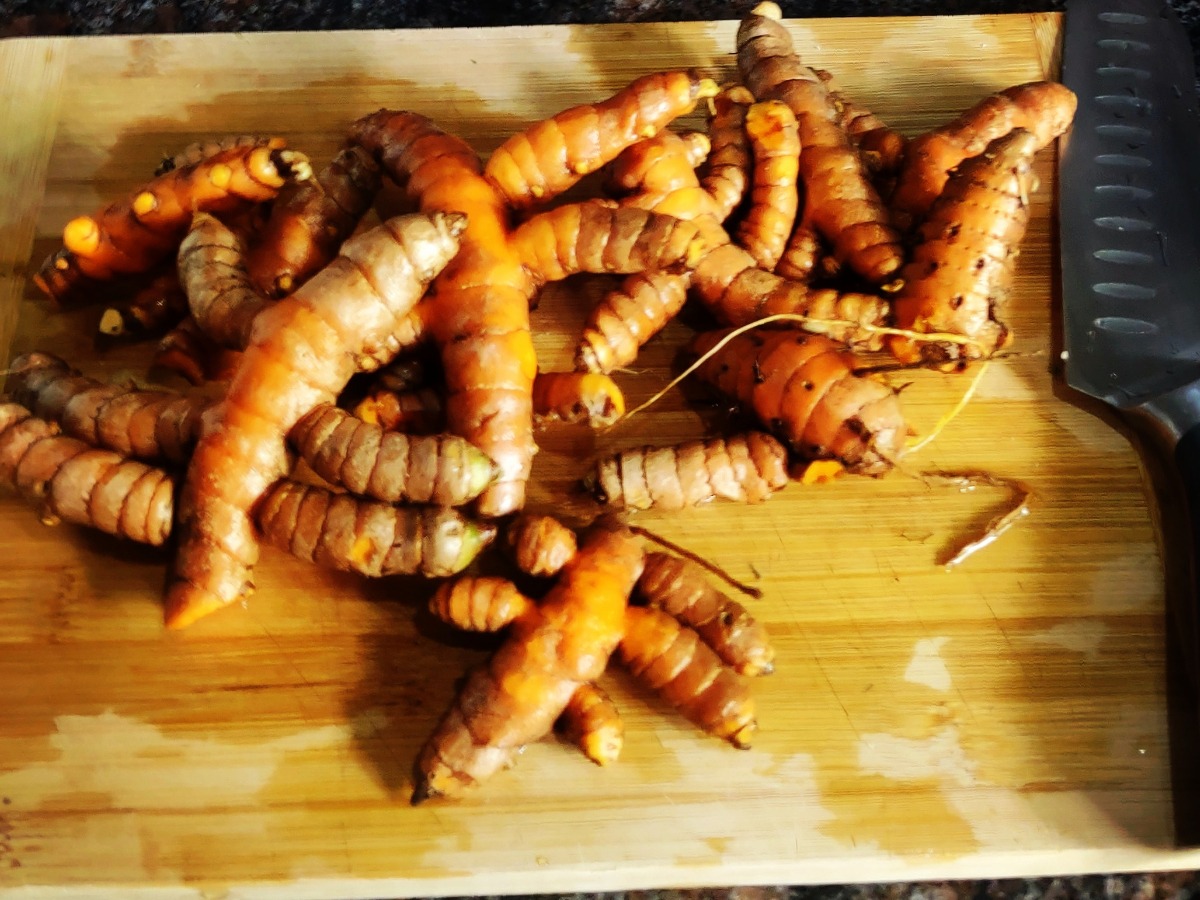Tropical vegetables include green leafy vegetables, root vegetables, fruits used in savoury dishes (like tomatoes and cucumbers), chillies, and edible parts of tropical plants such as pumpkin shoots and fern heads. These are vegetables that can be grown in the tropics, in hot climates either side of the equator, between the Tropic of Cancer and the Tropic of Capricorn. The tropics generally have a tropical equatorial or tropical climate with variations according to elevation and local micro climate.
In general, there are far fewer vegetables that you can grow from seed in the tropical summer than you can in the cooler months. Tropical winters are some of the best times to grow vegetables, reserve the heat and wet of summer for the truely tropical varieties, for instance winged beans, hot peppers and tropical eggplants.

What is a vegetable? A vegetable is a plant or part of a plant used as food, such as a cabbage, potato, carrot, or bean, according to the Oxford dictionary. We normally associate vegetables with savoury dishes, fruits with sweet dishes, but the lines are really quite blurred. This post is about tropica vegetables that can be grown, eaten, and consumed in the tropics. Some will be common and well known, some more exotic and unusual.
Tropical Green Vegetables
In the tropics we eat a lot of green leafy vegetables that you may not have realised are edible. Tropical greens that can be eaten include sweet potato tops (same family as morning glory), radish tops, and pumpkin shoots. Sweet leaf is another tropical green used like spinach in cooking.

As well as these more unusual greens, standard greens like kale and broccoli can also grow in the tropics, predominantly in the cooler, dryer winter months
We eat broccoli leaves as you would spinach and they’re particularly tasty.
In our experience rocket grows very fast and well and will grow for years before going to seed.
Growing vegetables that are usually associated with colder climates mostly happens in winter in a tropical climate.
- Sweet Potato Vine Leaves
- Rocket
- Kale (many varieties)
- Silverbeet
- Broccoli leaves
- Sweet Leaf
- Celery
- Mustard Greens
- Endive
- Lettuce
- Bok Choy
- Water Spinach
- Chinese Cabbage
- Pumpkin tops, radish tops, all can be eaten as greens
- Various types of perennial tropical spinach, including Brazillian, Okinawa, Malabar (Ceylon) spinach, longevity spinach, etc.
Peas Beans and Pulses to Grow in Tropical Conditions
Beans and pulses, the legumes, are staple foods providing both protein and carbohydrates in seed form. You can eat most fresh, or dry them for future use, either to plant, or to soak and boil for curries and soups.
Beans and peas are technically fruits of the legume family but most people consider them to be vegetables and eat them as vegetables.
- Bush Beans (French Beans)
- Snake Beans
- Red Snake Beans
- Purple Podded Beans
- Adzuki beans
- Cow peas
- Pigeon Peas (a huge perennial legume for fresh “peas” or lentils)
- Mung Beans
- Winged Beans
- Dwarf Red Snake Beans
- Snow Peas in cooler winters.
- Chick Peas
Nuts That Grow in The Tropics
Nuts are actually fruits (as are tomatoes, peppers and pumpkins of course) but people use them in savoury cooking so we’ll quickly mention these in the tropical vegetable section.
Tropical nuts include the coconut, of course. The king of nuts, from which we can easily make coconut oil for cooking or to protect our hair and skin. Coconut water is the liquid inside the coconut, and coconut milk can be extracted from the grated flesh.
Coconuts are a versatile and valuable food crop to grow if you have the right conditions and plenty of space. We are blessed with 3 mature coconut trees on our new 5 acre farm or homestead.
Cashews also grow in the tropics. A cashew tree produces a cashew apple, the cashew nut hangs beneath the swollen stem which forms the “apple”. Again, this is a very versatile tree. I have a small cashew tree which I grew from seed, I’ll let you know how many years it takes to grow.
Macadamias are another example of a tropical nut.
Tropical Vegetables That Are Fruits
A lot of the vegetables that we think of as vegetables and eat in savoury dishes are actually fruits. Those that can be grown in the tropics include the following fruit vegetables.
- Cherry Tomatoes
- Larger Tomatoes
- Aubergines (Eggplant )
- Thai Eggplant
- Peppers (capsicum), all kinds
- Chillies (can be perennial)
- Pumpkins Guide to growing pumpkins in the tropics here)
- Spaghetti squash (aka vegetable spaghetti)
- Cucumbers, seem to not like the hottest months
- African horned cucumber.
- Luffa (edible when young)
- Cucamelons (easy)
- Okra
- Bitter melon
- Snow Peas when it’s cool, a bit of shade helps
- Courgettes (Zuchini) (with difficulty, powdery mildew and squash bugs love them)
- Patty Pan Squash (also tricky)
Tropical Root Vegetables
Sweet potatoes are easy to grow in some tropical locations so long as the ground isn’t too wet. Some gardeners have success with regular potatoes in the tropics too. The time to plant potatoes in the tropics would be late autum, so that you can harvest potatoes before the tropical wet season. Seed potatoes take about 80 to 100 days, 3 months or so, so you’d harvest potatoes in the tropics in late winter or early spring.
I haven’t tried growing normal potatoes yet, but I will!
Sweet potatoes can be grown year-round in the tropics and take about 120 days, 4 months, to be ready to harvest. They like a lot of sun to store all that carbohydrate in their roots. You can’t grow sweet potato as a perennial if you have a frost, but for us in the tropics they grow year-round.
Cassava is a great tropical root veg to grow and being native to the tropics (tropical America) it does well. Cassava can be grown in Asia, Australia and Africa.
Gingers, including galangal and turmeric grow prolifically in the tropics. These tropical native vegetables are grown in India, Peru, Indonesia, northern Australia and the warmer parts of the United States (Florida). If you are in USDA Hardiness Zone 9, 10, or 12 and your temperatures do not fall to or below 32 degrees F (Zero Celsius, freezing point), you can safely grow ginger outside.
To grow ginger you ideally need a temperature of around 80F (26C) and a warm growing period of 5-6 months. You should be able to grow ginger in the sub tropics too, if you don’t get a frost.

Turmeric doesn’t enjoy temperatures below 10C (50F) and once our night-time temperatures dip to 10C in the tropics the bright green leaves start to deteriorate. That’s when it’s time to harvest the roots. Not all tropical regions will see temperatures as low as 10C but because we’re at an elevation, our microclimate is cooler, more sub tropical.
In cooler climates you can grow ginger in a warm greenhouse or indoors in pots.
Ginger is actually the world’s most popular spice, and of course it’s a tropical plant. Ginger is the root of the ginger plant, so its considered a vegetable not a fruit. In some dishes ginger can be used in large quantities, like a vegetable rather than a spice, for instance chicken with ginger in Thai food.
Radishes are another edible root vegetable that grow well in the tropics. There are many varieties of radish, including the more exotic Japanese daikon radish, they all grow well in the tropics but prefer the cooler, dryer months. Radishes are actually one of the fastest vegetable to grow, you can be eating radishes within 30 days of sewing the seed in your garden, pots, or raised beds.
Onions, spring onions, bunching onions and walking onions can also be grown in the tropics, usually in winter. Leeks can also be grown in the tropics.
There are many more plants that can be eaten and grown as vegetables in the tropics, there are tropical mushrooms, herbs, even banana bells can be shredded and eaten as a vegetable. The unripe fruit of many tropical trees and plants can be cooked or eaten raw as a vegetable, consider green papaya (pawpaw) green mango, unripe bananas and plantains, even jackfruit makes a great curry. The term “vegetable” is actually a pretty loose one. Enjoy cooking, eating, and growing your ttropical vegetables.
